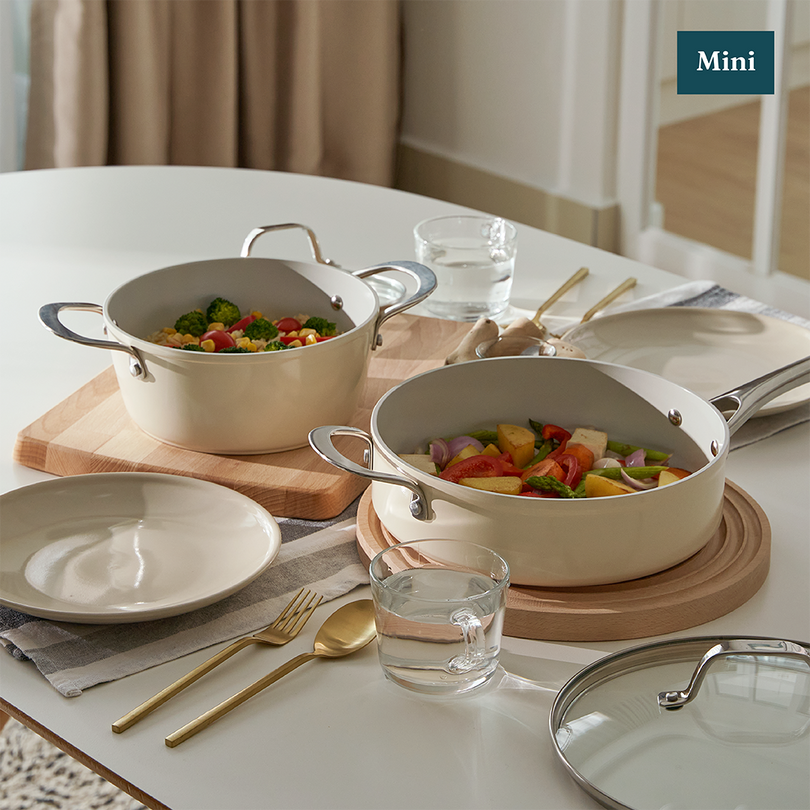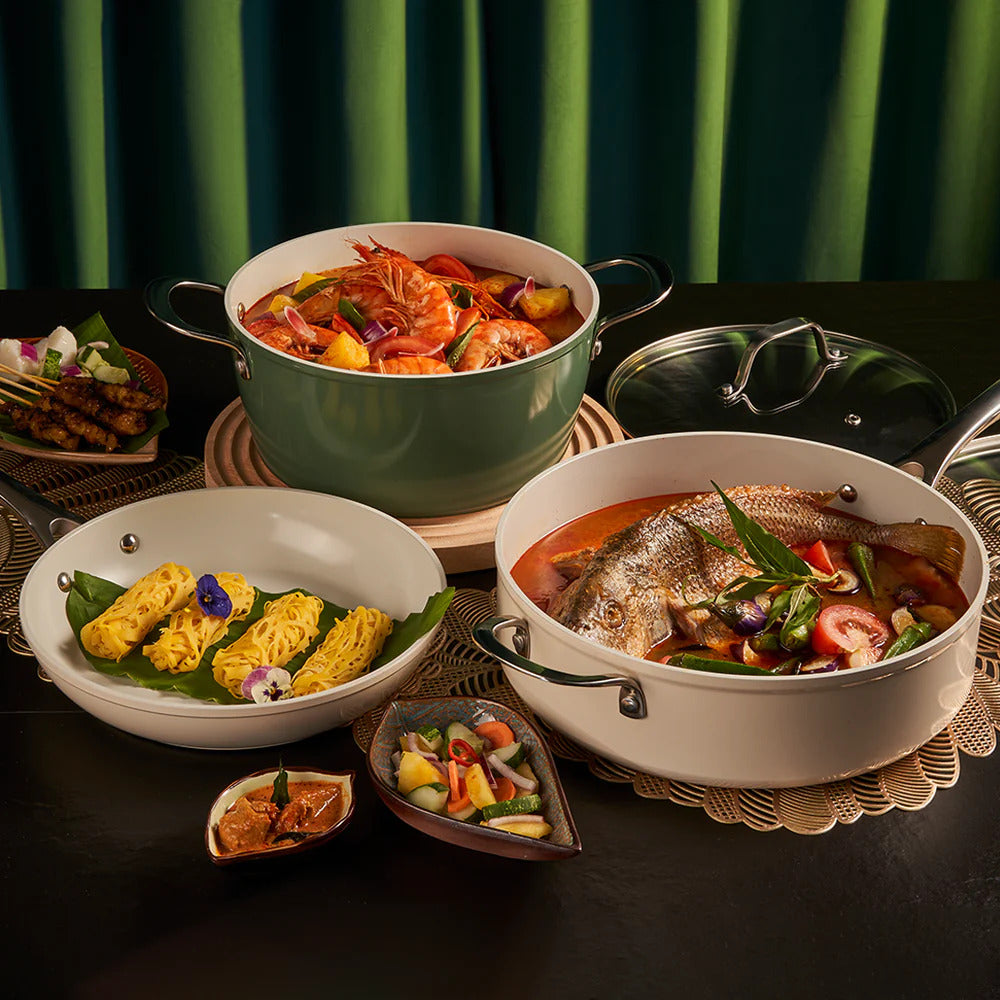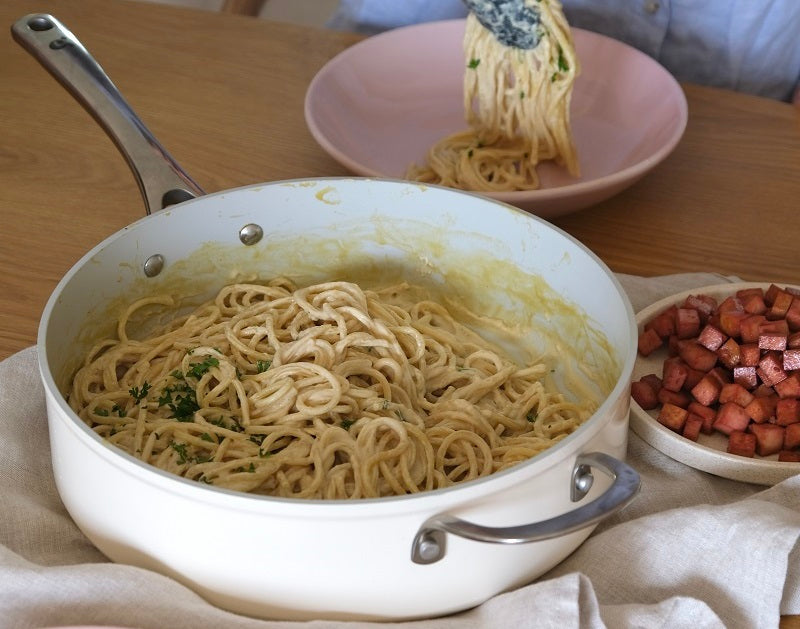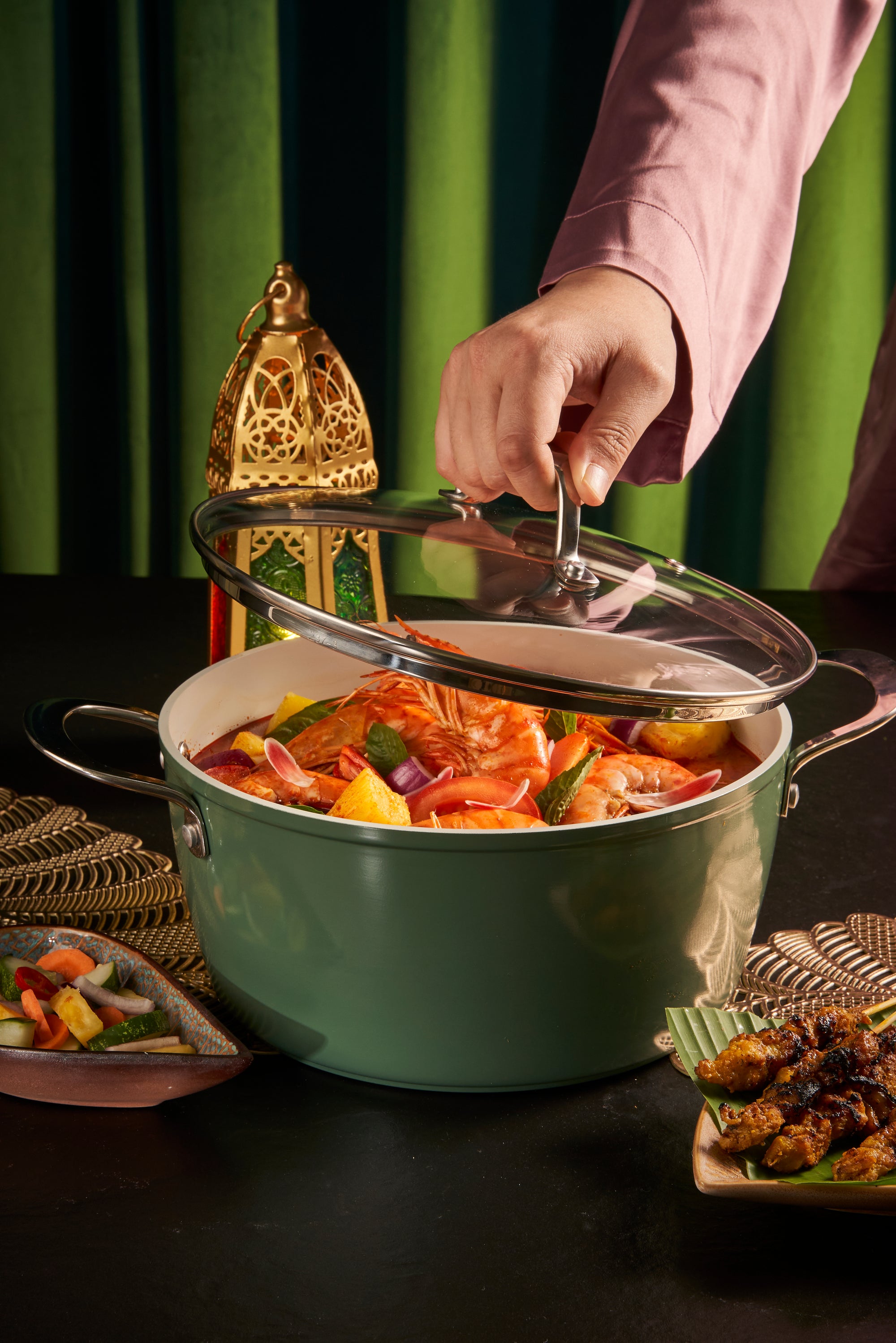The Complete List Of Food For Hari Raya To Eid With Loved Ones For A Truly Fulfilling Festive Celebration
After a holy month of fasting, prayer, reflection, and community, Muslims around the world eagerly welcome the joyous occasion of Hari Raya Eid Al-Fitr, also known as Eid.
This festive celebration marks the culmination of the faithful month-long Hari Raya Puasa journey, also known as Ramadan, bringing with it a vibrant tapestry of cultural traditions, warm gatherings, and of course, sumptuous feasts.
Part of Eid’s core is a delightful array of traditional foods that gather families and friends of the Muslim community together, brighten up dining tables, tantalise taste buds, and invoke cherished memories of shared meals between loved ones. From mouthwatering savoury traditional foods to indulgent sweet treats, this is one culinary landscape that reflects the rich diversity of Hari Raya around the world.
Even so, there are a number of staple dishes that have cemented themselves as essential culinary treasures of Hari Raya over the years. So join us on a gastronomic journey as we bring you the top must-have and must-try dishes of Hari Raya that celebrate the flavours, aromas, and culinary heritage of this joyous occasion!
Top 13 Essential Hari Raya Dishes In Singapore & Malaysia To Truly Celebrate This Joyous Occasion
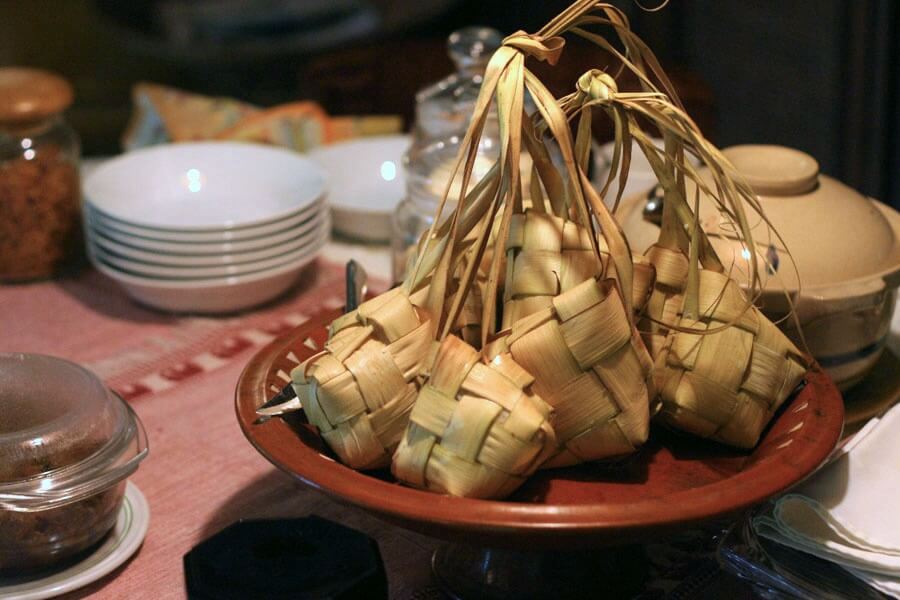
1. Ketupat
Walk into any mall or office during the months of Ramadan and Eid and you’ll almost always see ketupats adorned everywhere! It’s no wonder why the humble ketupat’s woven design is synonymous with Hari Raya. But did you know that ketupat is an actual traditional Hari Raya dish?
Ketupat is a traditional Malay rice cake which is made by tightly wrapping glutinous rice in woven palm leaves or coconut leaves then boiled in water until it is cooked. It’s a simple yet staple dish during Hari Raya celebrations that is said to symbolise unity, gratitude, and prosperity, while its diamond-shaped appearance is associated with blessings and good fortune.
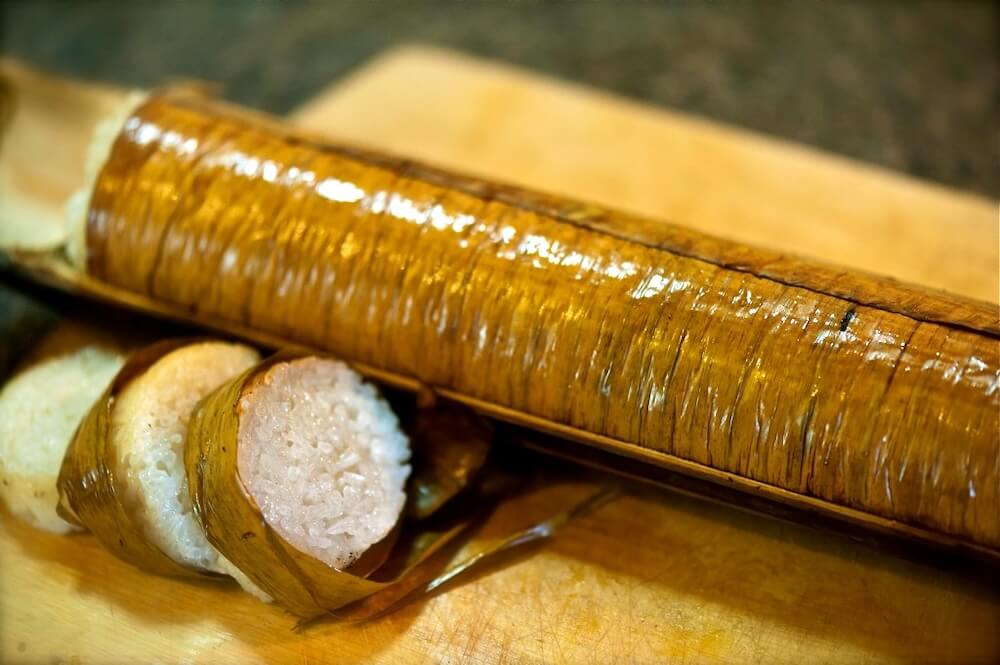
2. Lemang (Glutinous Rice Cooked In Coconut Milk)
Lemang is a traditional Hari Raya delicacy loved by individuals celebrating Hari Raya worldwide and found as a staple in many households' open house. It’s commonly enjoyed with a side of rendang or sambal goreng during the Hari Raya celebrations.
This traditional delicacy is made by cooking glutinous rice in coconut milk within bamboo tubes vertically over an open flame for four to five hours. The bamboo stick is typically lined internally with banana leaves before it’s filled with glutinous rice and coconut milk to prevent the glutinous rice from sticking within, while also imparting a delicious flavour to the rice.

3. Rendang
Just to set the record straight, traditional rendang is NOT crispy (if you know, you know). Rendang may have started off as a traditional Indonesian dish, but over the years it’s become a classic festive dish in Singapore and Malaysia that is also now enjoyed all year round.
This popular slow-cooked meat stew is served during Eid celebrations and sometimes consumed by Muslims when they break their fast for the day during Ramadan.
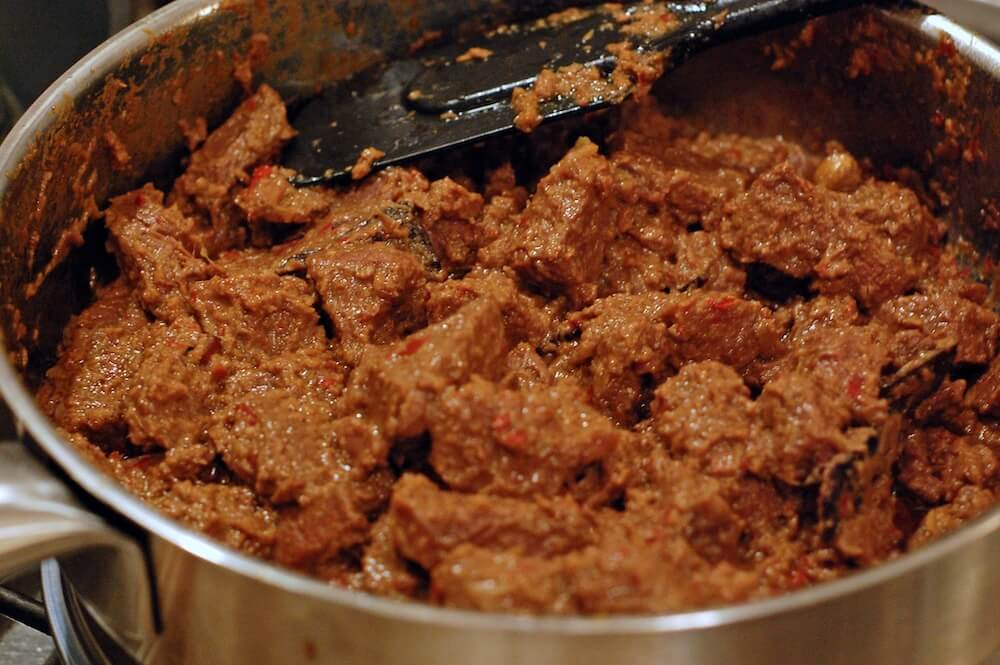
Rendang is prepared by first marinating meat pieces in a mixture of spices that include lemongrass, galanga, ginger, garlic, turmeric, chilli peppers, and other spices. After that, it is slowly cooked in coconut milk until the sauce thickens and the meat becomes tender and infused with the complex flavours of the spices.
These days you’ll often find many variations of rendang such as beef rendang, chicken rendang, fish rendang, and squid rendang, but the most popular one is ultimately still beef rendang.

4. Satay
Satay can mean two things in Singapore - a full dish consisting of grilled skewered meat with a side of spicy peanut sauce, cubed rice cakes, complete with chopped fresh cucumbers and onions, or just solely a set of grilled skewered meat. This popular Southeast Asian dish may be a Hari Raya classic, but much like rendang, it’s become a staple food enjoyed daily by locals.
Satay is prepared by marinating small chunks of beef, chicken, or lamb in a mixture of spices that usually include turmeric, lemongrass, and garlic, before it is skewered and grilled over charcoal, giving it its signature smoky flavour. The skewers are then enjoyed on its own, or by having it dipped in the classic sweet dipping sauce made of ground peanuts, coconut milk, soy sauce, and spices.
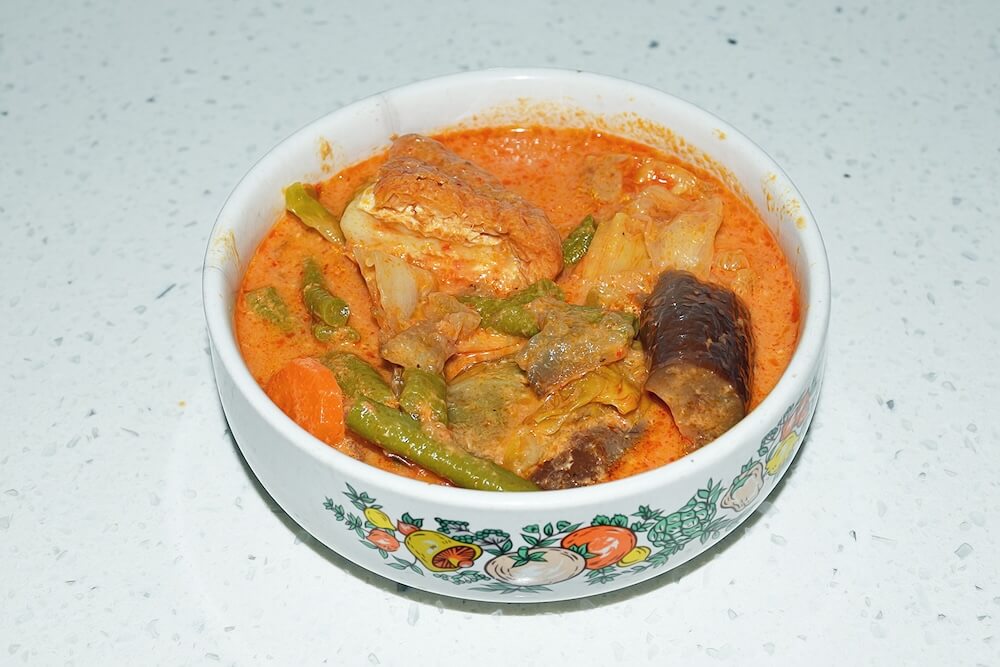
5. Sayur Lodeh (Creamy Vegetable Stew)
Vegetarians or those looking for a lighter dish over the meat-heavy rendang and satay will definitely enjoy the vegetarian-friendly sayur lodeh. This creamy vegetable stew is made with a variety of vegetables like green beans, long beans, cabbage, carrots, and tofu in a spiced coconut milk broth flavoured with turmeric, galangal, garlic, and shallots.
Sayur lodeh is often enjoyed together with ketupat and hard boiled eggs, which serves as a great accompaniment to the natural richness of sayur lodeh.
Fun Fact: Did you know that sayur lodeh served together with ketupat is commonly referred to as lontong?
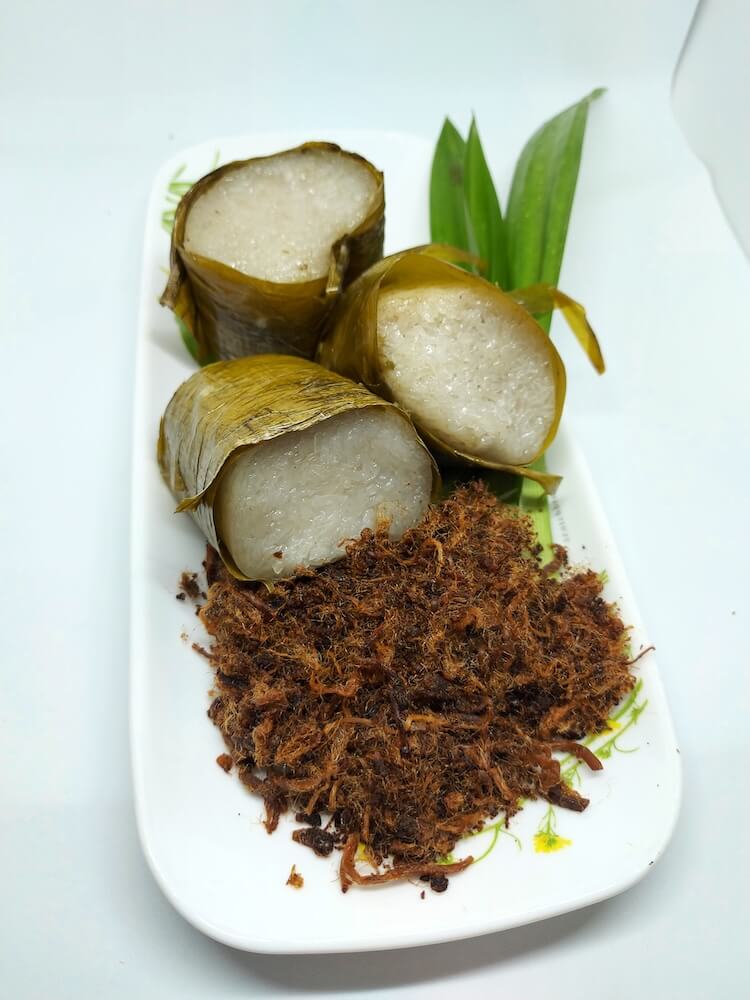
6. Serunding (Spiced Grated Coconut)
Serunding is a unique dish of spiced grated coconut that can be served as a condiment or a side dish to ketupat and lemang during Eid. Its texture is dry and crispy, making it similar to meat floss only that it does not typically contain meat.
This traditional dish is prepared by grating fresh coconut flesh, then cooking it with a mixture of spices such as lemongrass, turmeric, garlic, and dried chilli in a wok for an extended duration until it becomes dry and crispy. You can then enjoy it as part of a main dish, or on its own as a snack.
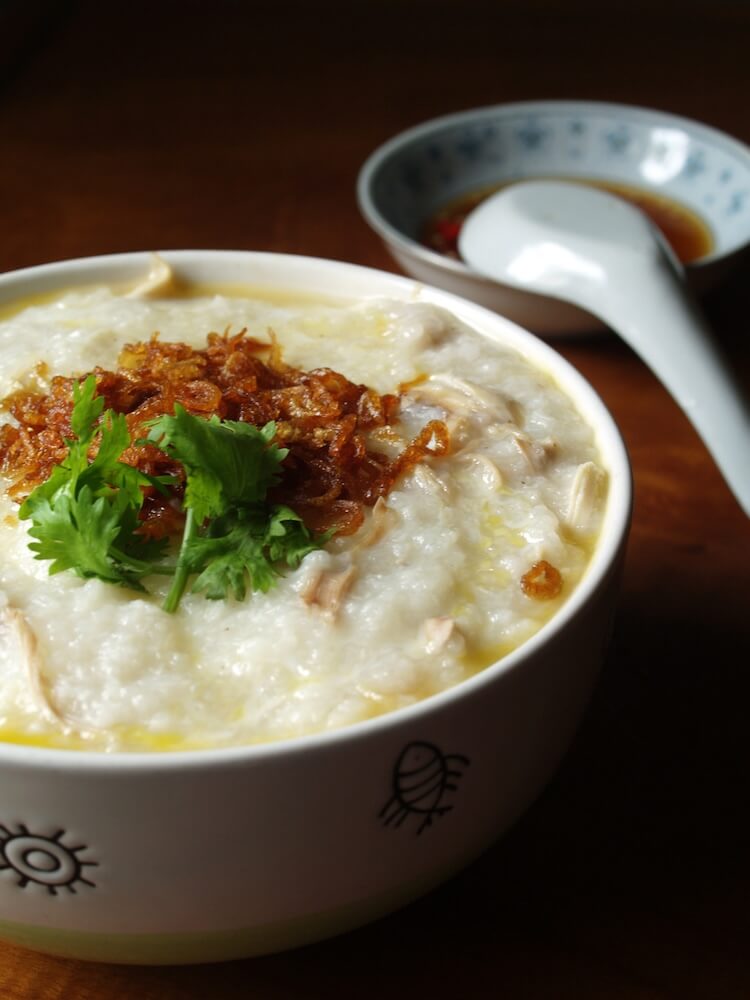
7. Bubur Lambuk
Ah, the humble rice porridge. Bubur lambuk is a savoury coconut milk rice porridge that is popular for its rich texture and aromatic flavour that comes from the array of spices used to cook it such as galangal, lemongrass, pandan leaves, onions, and garlic. It’s also often cooked with one type of meat, typically beef or chicken.
Bubur lambuk holds a special place in the hearts of those celebrating Ramadan and Eid as it is traditionally prepared in a communal hall or mosques before it is distributed to the community after fasting hours. It’s a significant Hari Raya dish that embodies a sense of community, spirit of generosity, and togetherness that is integral to Eid celebrations.
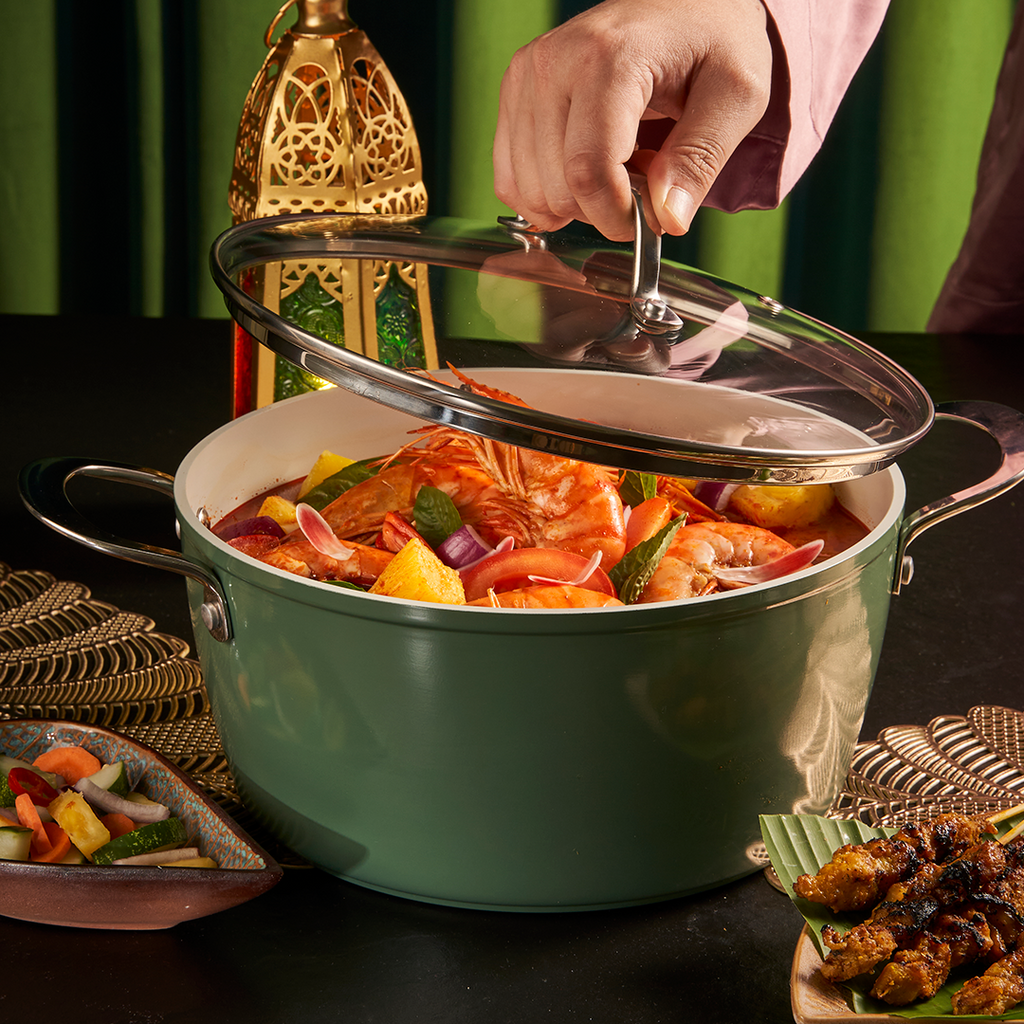
8. Asam Pedas (Sour & Spicy Stew)
I like to think of asam pedas as a dish that encompasses the saying “variety is the spice of life”. This classic Malay and Indonesian dish is made by cooking fish or seafood in a tangy and rich mixture of dried chilli paste, lemongrass, tamarind juice, and turmeric and is known for its dual spicy and sour nature. Not forgetting the usual vegetable suspects of okra and tomatoes.
What’s interesting about asam pedas is how it wasn’t originally a dish exclusively linked to Eid, but a common dish enjoyed daily by the masses. However it is now a popular choice for the festive season because of its bold flavours, especially when served with freshly cooked plain steamed rice.
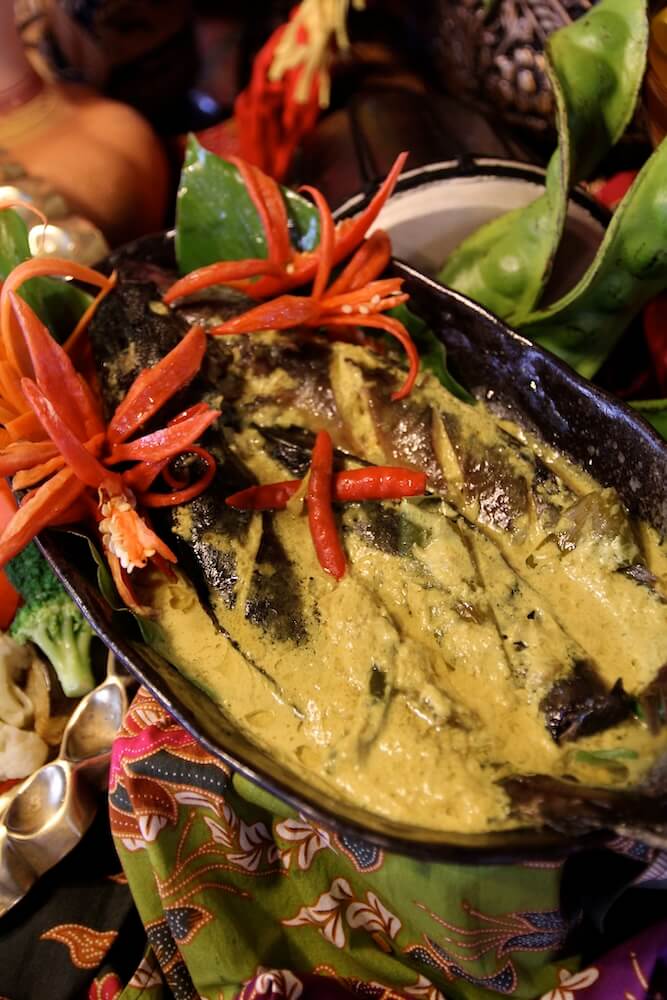
9. Masak Lemak (Yellow Curry)
Rich and creamy, masak lemak is a type of yellow curry that is popular in Eid celebrations in Malaysia and it is often prepared with chicken, beef, fish, or vegetables. It delivers a delightfully creamy and comforting flavour that makes it a favourite especially among families.
Masak lemak is typically made by simmering the main ingredient (chicken, fish, beef, or vegetables) in a rich sauce made from coconut milk, turmeric, and a paste of ground spices that often include lemongrass, galangal, and chilli (both fresh and dried chillies) in a large pot. The mixture is then cooked until it is tender with well-balanced flavours and served with plain rice.

10. Ayam Goreng Berempah (Spiced Fried Chicken)
No celebration is complete without a crispy dish that is deep-fried to perfection, and that’s where ayam goreng berempah comes in! Ayam goreng berempah essentially means spiced fried chicken in Malay and Indonesian language.
It’s made by first marinating chicken in a rich blend of spices and herbs, coating it in corn flour or rice flour, then deep-fried in sunflower oil or peanut oil to achieve a deep, crispy brown skin that hides a juicy and flavourful bite. The spice mix for ayam goreng berempah usually consists of ground turmeric, coriander, cumin, garlic, fennel, chilli powder, white or black pepper, and more common Malay spices to achieve that flavourful blend.
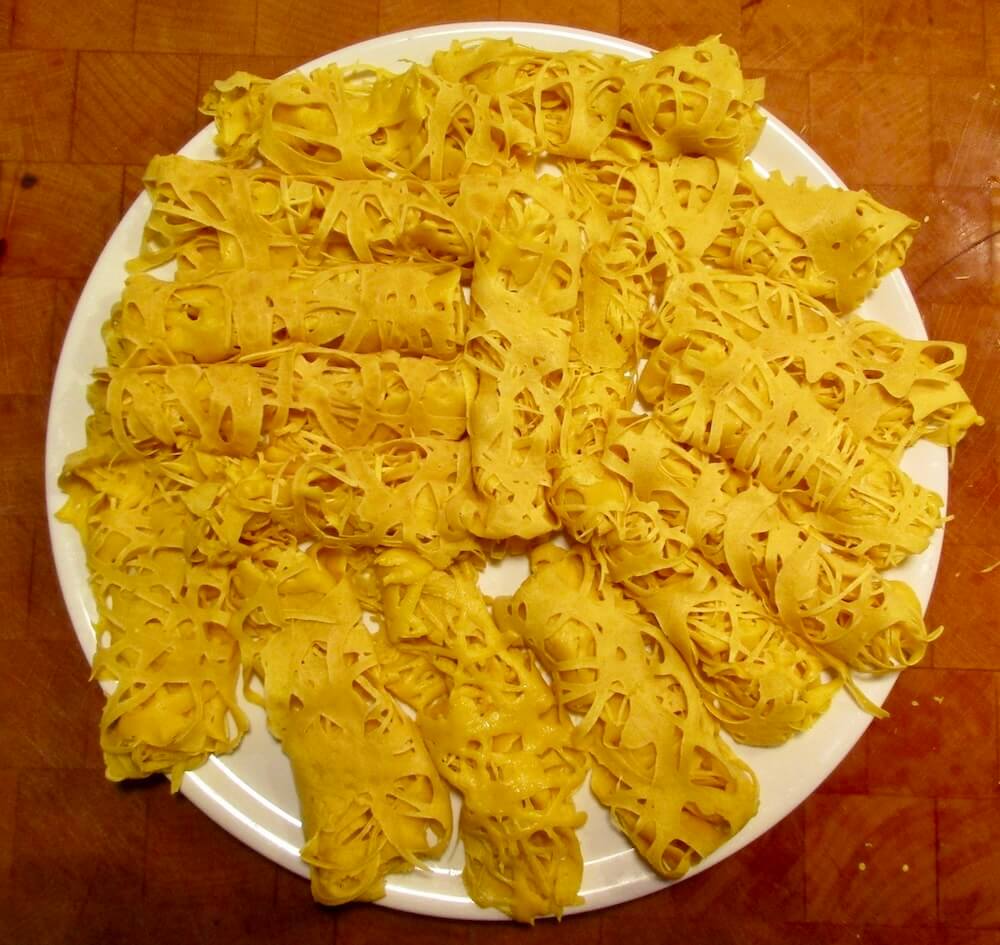
11. Roti Jala
Roti jala means “net bread” once translated simply because of its distinctive appearance. It’s a lacy, crepe-like pancake made from a batter of flour, eggs, and coconut milk that is commonly served with a side of chicken curry or fish curry.

Its intricate pattern is made through the use of a special Roti Jala cup with multiple nozzles at its base. First it is filled with the roti jala batter, then it is drizzled in a circular pattern onto a hot cast-iron pan or a large non-stick fry pan to create its net-like form. You’ll often find roti jala served in little rolls, or in its homemade, unrolled style.

12. Dodol
Dodol is a traditional childhood favourite especially for the Eid festive celebrations. It is a sweet, sticky, and soft toffee-like confection that is made by cooking a mixture of coconut milk, gula melaka (palm sugar), and glutinous rice flour over low heat in a non-stick wok for up to an hour until it achieves its sticky consistency.
Once dodol is cooked, it is then traditionally wrapped in cellophane wrapper or a banana leaf lined container to prevent it from sticking, while allowing easy access. Because one bite of it is simply never enough!
While dodol is traditionally found in its natural, coconut-based flavour, modern variations now include pandan, banana, and durian flavoured dodol, with the latter being the most popular one.
Fun Fact: It can take up to nine hours to cook a large batch of dodol using traditional methods!

13. Kueh Lapis
Before we get confused, there are two particular types of lapis desserts that are popular during the Eid celebrations. One is a colourful steamed layer cake made from rice flour, sago or tapioca, coconut milk, and sugar to form a multi-layered colourful translucent cake called kueh lapis.

The second type also consists of multiple thin layers of cake batter that is baked instead of steamed - this particular type of layered cake is known as kek lapis. Kek lapis’ batter is typically made out of butter, eggs, sugar, flour, and often spices like cinnamon or clove, which gives it its distinctive flavour.
As mentioned earlier, both kueh lapis and kek lapis are popular desserts served during Eid and special occasions, only that one is steamed and the other is baked, and that they both taste different.
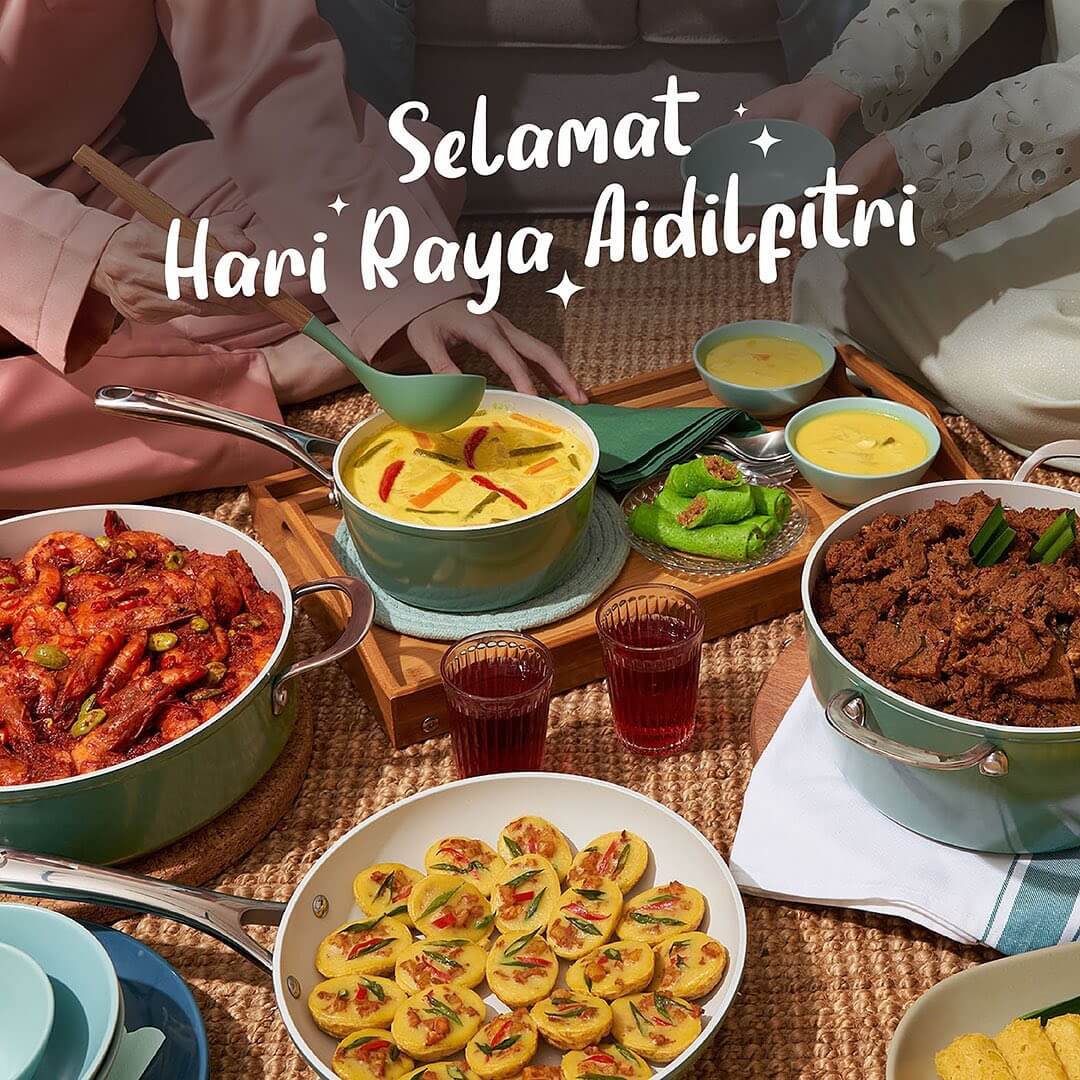
What Food Is Eaten During Hari Raya?
Hari Raya often brings forth a feast of flavours that highlight the rich culinary traditions and history of Muslim communities.
It's very common to see tables laden with a variety of dishes that range from sweet and savoury to signify the end of the month of fasting. Even at its simplest, you'll find a rice dish like ketupat or lemang, which is accompanied by a rich, coconut milk-based curry such as rendang or sayur lodeh.
Lastly, there'll be a sweet delight to complete the feast such as the popular kueh lapis or dodol. Let us not forget the array of jars filled with kuih raya such as the iconic London almond and pineapple tarts that await guests in every open house during this festive celebration.
Why Is Hari Raya Food Important?
Food plays a central role in the Hari Raya celebrations for a few central reasons - first, it is a means to break the fast. Food is also a universal language that brings people together, which leads to the next points on how it serves as an important symbol of unity, generosity, and gratitude. That's because Hari Raya is a time where families and communities come together to share in a feast that celebrates the completion of a month of spiritual reflection, while also strengthening bonds among loved ones.
Should you partake in the Hari Raya celebrations, you'll also notice the greeting "Selamat Hari Raya Aidil Fitri, Maaf Zahir dan Batin" is said from one to the other, which bears the meaning that one seeks forgiveness for sins or hurts that may have been done unknowingly.
It also points to how the act of preparing and sharing meals ties in to the spirit of giving and receiving, and in turn reflects on the broader themes of forgiveness, charity, and community that are central to the Hari Raya celebrations.

